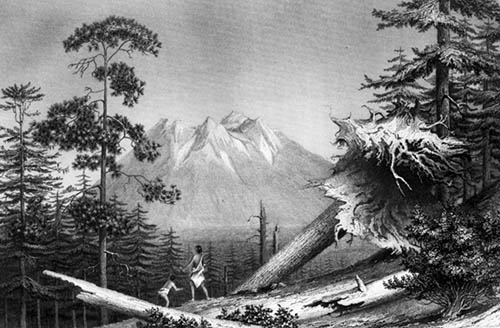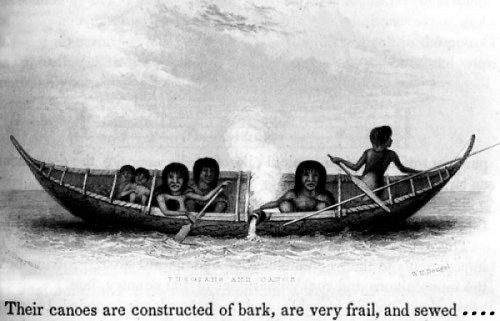The Wilkes Expedition
Today, Wilkes' journey. The University of Houston's College of Engineering presents this series about the machines that make our civilization run, and the people whose ingenuity created them.
After Lewis and Clark, then what? America's appetite for geographical knowledge had only been whetted. Other expeditions went west, but our imagination craved more. We finally began converging on another such adventure in 1822.
An eccentric named John Symmes began claiming that Earth was hollow, and its open interior was habitable. We just needed to find the entrances, which lay at each pole. Soon Symmes' supporters were pressing the Senate to send expeditions to locate those portals into Earth's interior.
Symme's prophet was Ohio journalist Jeremiah Reynolds. For a while, Reynolds beat Symmes' drum. But he obviously heard the steps of the fool killer. He dropped the hollow Earth theory and pressed instead for a major American Naval expedition.
As the campaign mutated from fantasy into reality, the Senate was finally convinced. In 1838, the United States Exploring Expedition (as it was named) set sail under the command of a vain and fractious New York aristocrat named Charles Wilkes. Its three ships, and additional resupply vessels, were charged with an enormous journey.
They were to sail south, exploring the Atlantic, pass through Cape Horn, explore Antarctica, visit the Sandwich Islands and the American Northwest, cross the Pacific and Indian Oceans, round the Cape of Good Hope and return at last to New York. All this took five years to complete.
But Wilkes lacked the one quality that'd made Lewis and Clark so wonderfully successful. He played the role, not of first among peers, but of leader. He was in constant trouble. Flogging his men, destroying morale, and pushing his officers to near-mutiny.
When Fiji Islanders killed two midshipmen, Wilkes razed two villages and killed eighty-seven people. Later, one of his ships was lost with all hands. And, no sooner was he back in New York, than he and his officers raised court martial charges against one another. Now it was the trial -- not the voyage -- that seized America's interest. Still, Wilkes was probably the reason that America claimed the Oregon Territory for its own.
He spent nineteen years writing up the material collected on the trip. Then, the Civil War: Wilkes once more served boldly and dangerously. He very nearly brought Great Britain into the conflict when he shot at a British vessel in the Caribbean. Once again, he faced court martial and suspension.
This morning Wilkes became real for me when I stumbled across his first published account of the voyage. Turn pages in this very beautiful, very old, five-volume set. Look at steel engravings of landscapes, of natives, of their songs, of fruits and animals.

All the harm Wilkes brought on himself and others evaporates into the sheer beauty of discovery. But, Oh, the restlessness! A.E. Housman could've been talking about Wilkes when he wrote,
The tree of man is never quiet;
Then 'twas the Roman, now 'tis I.
I'm John Lienhard, at the University of Houston, where we're interested in the way inventive minds work.
(Theme music)
C. Wilkes, Narrative of the United States Exploring Expedition, During the Years 1838, 1839, 1840, 1841, 1842. Vol. I-V, Philadelphia: 1849. (This set first came out in 1845.)

Drawing of Mount Shasta made on the Wilkes expedition

Drawing of a Tierra del Fuego canoe made on the Wilkes expedition
In the episode, I quoted from the poem On Wenlock Edge, which is part of A. E. Housman's, A Shropshire Lad. You might be interested in the entire context of those two lines:
On Wenlock Edge the wood's in trouble;
His forest fleece the Wrekin heaves;
The gale, it plies the saplings double, And thick on Severn snow the leaves.
'Twould blow like this through holt and hangar
When Uricon the city stood;
'Tis the old wind in the old anger,
But then it threshed another wood.
Then, 'twas before my time, the Roman
At yonder heaving hill would stare;
The blood that warms an English yeoman,
The thoughts that hurt him, they were there.
There, like the wind through woods in riot,
Through him the gale of life blew high;
The tree of man was never quiet-
Then 'twas the Roman, now 'tis I.
The gale, it plies the saplings double;
It blows so hard, 'twill soon be gone.
Today the Roman and his trouble
Are ashes under Uricon.